|
Popular Saltwater Fish for Beginners
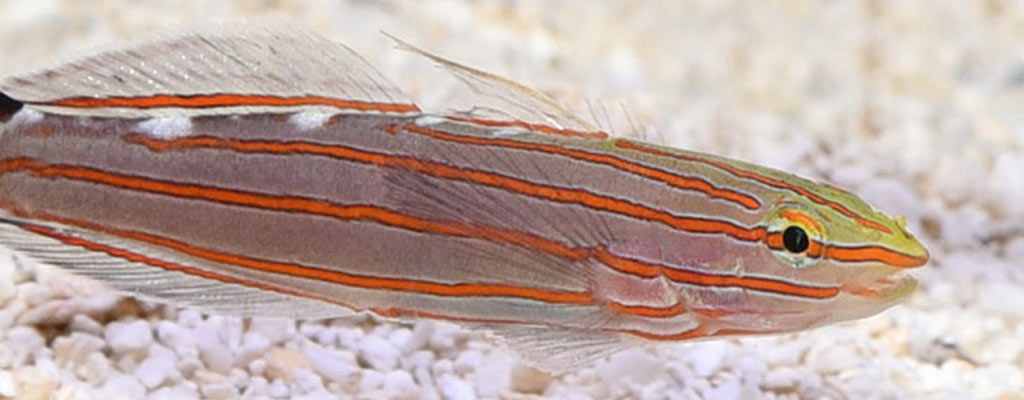
Once your aquarium is properly set up with all water parameters met and pump(s) circulating the water, and it is aquascaped with décor, you are ready for your next addition, FISH!
The experts at LiveAquaria® have thoughtfully created this list of amazing, easier-to-care-for fish. What makes this compatible assortment of fish even more spectacular is that the different species have all been captive bred (CB). These are fish you can feel good about! There are many benefits to CB fish. The primary benefit is that the fish have been raised in an aquarium and will accept an array of foods, from pellets to frozen/thawed foods. The acclimation of these fish to your aquarium will be much quicker compared to wild-caught and collected fish. CB fish are also much hardier than wild-caught fish. CB fish are parasite-free and younger in age.
The other important benefit to CB fish is that they are a sustainable, viable option that help ease the impact put on reefs.
Ocellaris Clownfish

(Amphiprion ocellaris)
The Ocellaris Clownfish may be one of the aquarium industry's most popular marine fish. Its beautiful orange body dressed with white bands outlined in black instantly distinguishes the Ocellaris Clownfish. This member of the Pomacentridae family is an excellent addition to almost any saltwater aquarium system. What makes this specific variety even more appealing to aquarists is the fact that each Ocellaris Clownfish is captive-bred to help protect the fragile reef environments of the world.
This clownfish is an aggressive eater. It will accept most meaty foods and frozen herbivore preparations.
Court Jester Goby
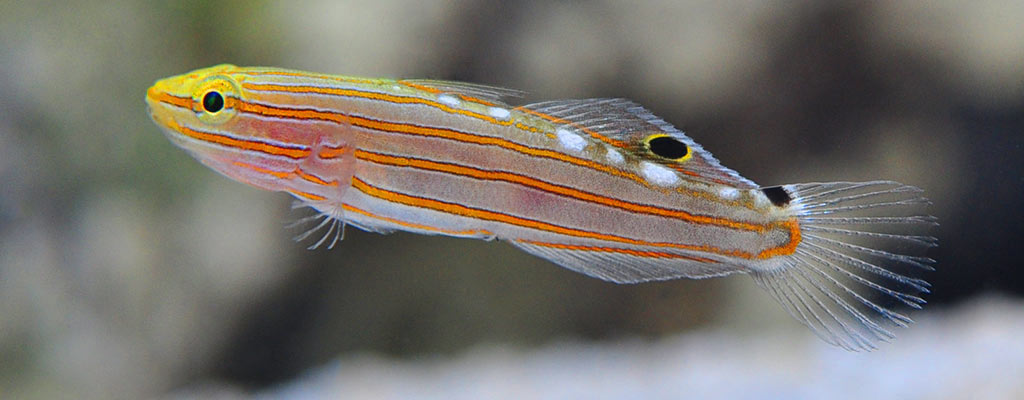
(Koumansetta rainfordi)
The Court Jester Goby, also referred to as Rainford's Goby or Old Glory, was first discovered in the Western Pacific in 1940 by Whitely, and got its name due to a brightly colored body. The body is green and blue with horizontal orange stripes running the entire length of the body. The Court Jester Goby is very timid and peaceful and is a great addition to the reef or fish-only aquarium.
The diet should consist of filamentous algae and small crustaceans, such as live and frozen brine shrimp and mysis shrimp.
Pajama Cardinalfish
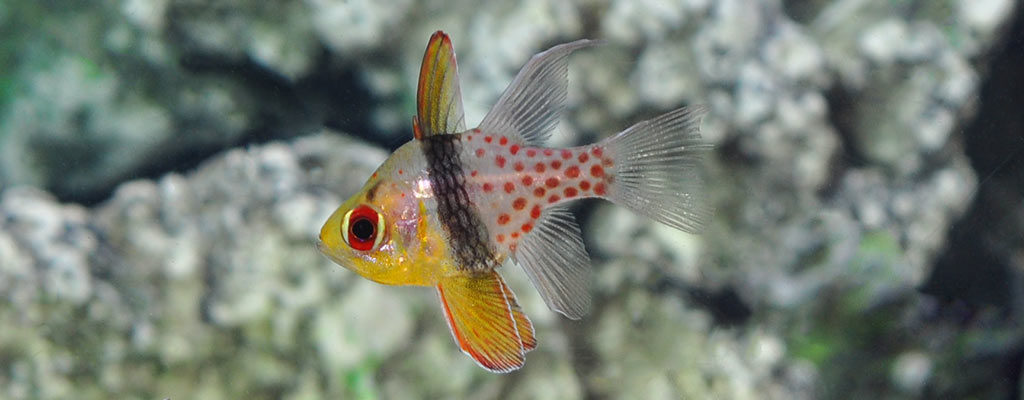
(Sphaeramia nematoptera)
The Pajama Cardinalfish has a rainbow of playful colors. It has a greenish-yellow face, bright orange eyes, and a silver-based body dressed with a bold black scalar margin and a posterior dotted with orange polka dots. Though its bold coloration may stand out, the Pajama Cardinalfish has a peaceful nature that lets it blend perfectly into any community saltwater aquarium.
Like many other schooling fish, the Pajama Cardinalfish will form a strict hierarchy when kept in small groups within the aquarium. However, unlike some social fish, this member of the Apogonidae family does not use aggression to exert dominance over other cardinalfish.
The Pajama Cardinalfish requires a well-balanced diet of meaty foods such as feeder shrimp, flake foods, pellet foods, marine flesh, bloodworms, and, depending on its size, live feeder fish.
Watchman Goby
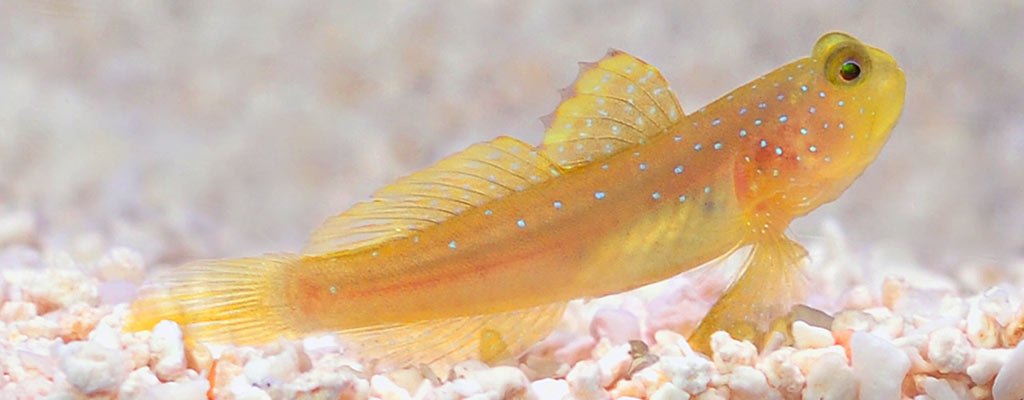
(Cryptocentrus cinctus)
The Watchman Goby, also known as the Yellow Prawn Goby or Yellow Shrimp Goby, was first discovered in 1936 by Herre. The head and body are yellow-orange with bright blue spots on the head and fins. The Watchman Goby wears an amusing perpetual frown, and likes to peek out from behind rocks. They have been known to form symbiotic relationships with snapping shrimp.
They require a 30 gallon or larger aquarium with plenty of loose coral rubble, ample swimming room, and a sand bottom for burrowing. Watchman Gobies are peaceful, but can become aggressive and territorial with their own kind unless they are a mated pair. They may try to jump out of the aquarium or other small openings, therefore a tight-fitting lid is required to prevent escape.
The Watchman Goby should be fed a varied diet consisting of foods specifically designed for carnivores. If kept in a reef aquarium, the Watchman Goby should be fed once per day.
Link’s Goby
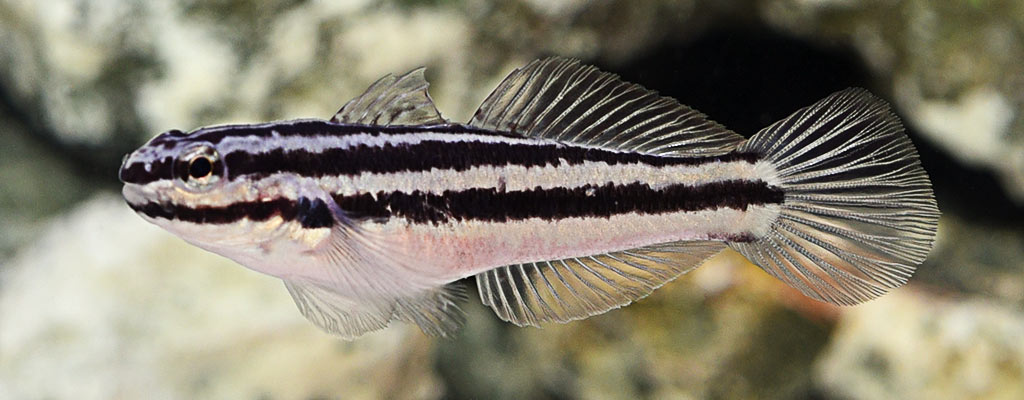
(Amblygobius linki)
Link’s Goby is found in the mangrove roots and mud flats in the Western Pacific, and is a sand-sifting species that will continually process mouthfuls of sand in its search for food. It has horizontal black and white stripes extending along the length of its body. Link’s Goby is a generally peaceful fish that will aid in keeping your sand bed aerated and clean.
Feed Link’s Goby a variety of foods such as mysis shrimp, frozen spirulina brine shrimp, cyclops, pellets, and flake foods.
Forktail Blenny
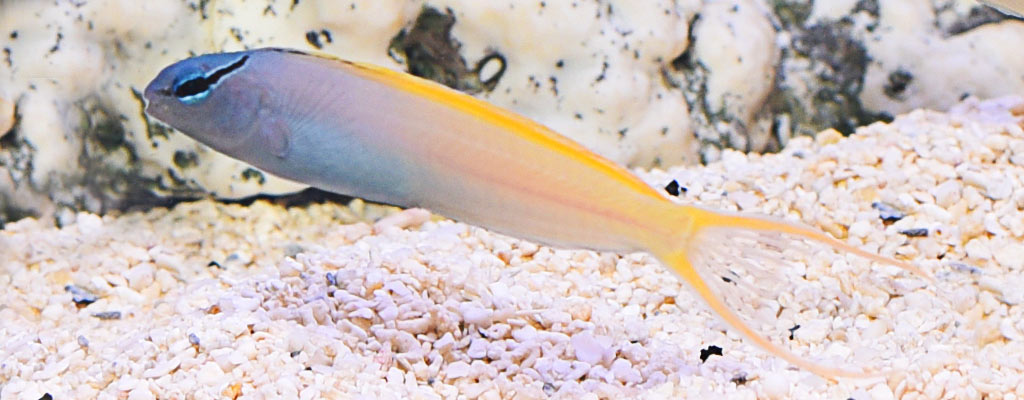
(Meiacanthus atrodorsalis)
The Forktail Blenny, also known as the Lyretail Fang Blenny or Yellowtail Fang Blenny, has a caudal fin that resembles a fork, with two long exterior spines and five much-shorter middle spines. The body is a pale blue that runs like watercolor into a bluish-yellow at the tail. Males are generally larger than females and experience a succession of color changes when breeding.
The Forktail Blenny is considered venomous and should be kept only with caution around children having aquarium access since it may perceive fingers as an attacker and deliver a singularily painful bite.
The Forktail Blenny should be fed a diet consisting of finely chopped crustacean flesh, mysis shrimp, and vitamin-enriched brine shrimp, as well as frozen herbivore preparations.
Coral Beauty Angelfish
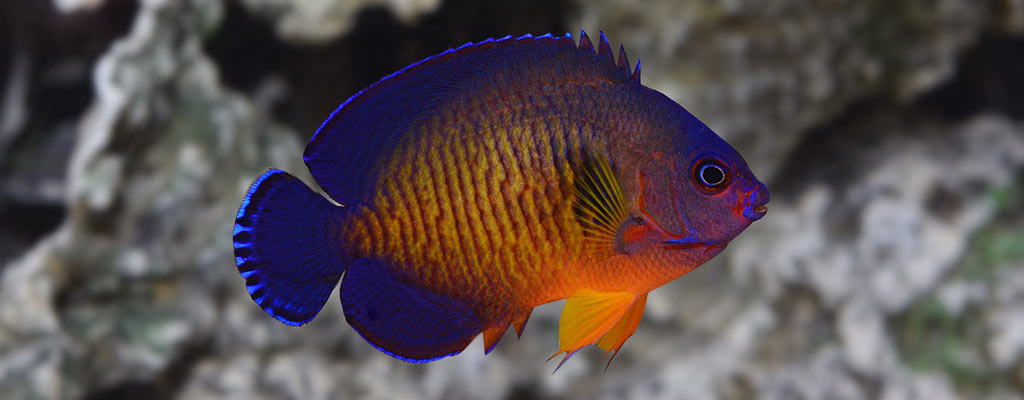
(Centropyge bispinosa)
Very common on the Great Barrier Reef, the Coral Beauty Angelfish is also known as the Twospined Angelfish or Dusky Angelfish. The body and head are a deep royal blue, highlighted with an iridescent orange to yellow. The Coral Beauty Angelfish is one of the easiest angels to care for.
The Coral Beauty Angelfish is prone to nip at stony and soft corals (sessile invertebrates).
The diet of the Coral Beauty Angelfish should consist of spirulina, marine algae, high-quality angelfish preparations, mysis or frozen shrimp, and other quality meaty foods.
Aiptasia Eating Filefish
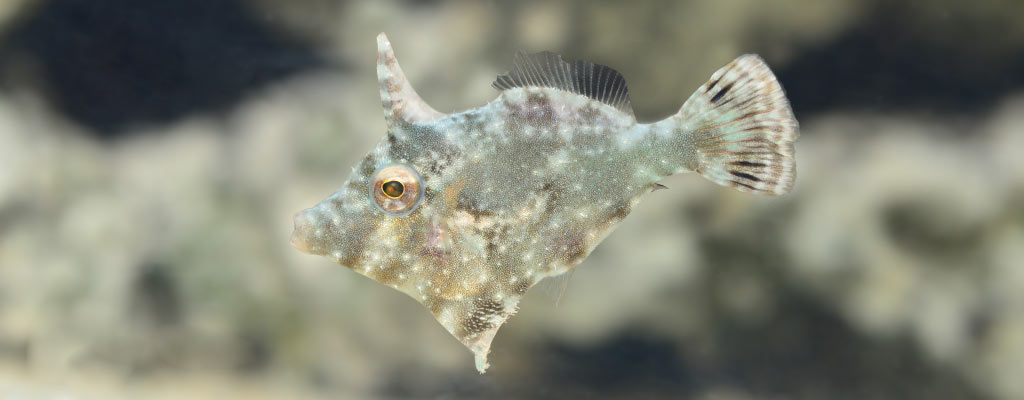
(Acreichthys tomentosus)
The Aiptasia Eating Filefish is also known as the Bristletail Filefish, Matted Leatherjacket, Tomentosus Filefish, or Matted Filefish. In the wild, the Aiptasia Eating Filefish prefers the shallows of seagrass areas, adding additional camouflage to its already unique color pattern of mottled green, brown, and tan, which can change depending on its surroundings and mood.
These shy fish are rarely aggressive towards other fish except those of its own genus. It is best suited for aquariums 30 gallons or larger that do not contain small invertebrates.
The Aiptasia Eating Filefish is known to eat Aiptasia anemone in the home aquarium, but may also nip at soft and stony corals as well. The diet should include shaved shrimp, squid, scallop, mysis shrimp, freeze-dried krill soaked in a vitamin supplement, and frozen marine algae. The Aiptasia Eating Filefish should be fed small quantities of food several times per day.
|